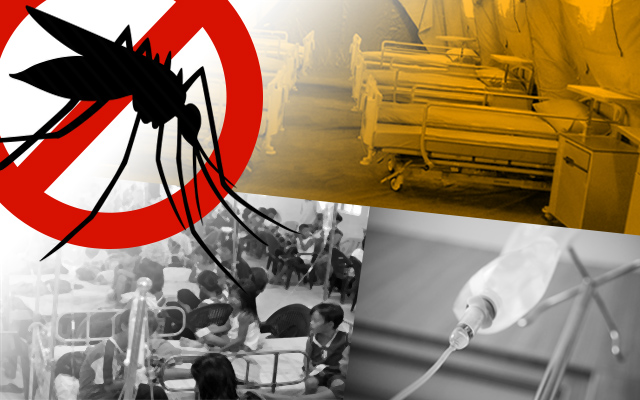BAGUIO CITY – Health authorities in the region disclosed that dengue fever cases for the first ten months of this year totaled 6,899, double the 3,431 cases recorded during the same period last year.
From January 1 to November 1, 2018, the Cordillera office of the Department of Health (DOH-CAR) reported 11 dengue-related deaths in the region with eight of the fatalities from the region and three from non-CAR provinces compared to the 10 dengue-related deaths during the same period last year.
The report added the dengue fever cases were from Kalinga with 1,210 cases followed by Apayao with 1,203 cases, Benguet – 1,083 cases, Abra – 913 cases, Ifugao – 719 cases, Baguio City – 5-5 cases, Mountain Province – 243 cases and non-CAR provinces, 1023 cases.
Of the 11 dengue-related deaths recorded in the region, Karen B. Lonogan, health program officer of the DOH-CAR’s Regional Epidemiology and Surveillance Unit (RESU), said 2 deaths each were reported in Abra, Benguet and Baguio city while 1 death each was recorded in Ifugao and Kalinga and 3 deaths were from non-CAR provinces but were given medical treatment in the medical facilities in the different parts of the region.
She reported there were more males affected by the dengue fever with 3,665 cases, equivalent to 53 percent of the total number of affected individuals.
According to her, the age range of the dengue-affected individuals was from 4 days to 96 years old with a median of 17 years old.
Lonogan admitted there were laboratory-confirmed dengue virus for each of the provinces from 2014 to 2018 and clustering of cases were also noted in all the Cordillera provinces that warranted the implementation of appropriate health interventions from the different district health units regionwide.
Dengue fever is caused by any of the 4 types of dengue virus wherein all the said strains are present in the Cordillera Administrative Region.
Lonogan explained that an infected day-biting female aedes mosquito transmits the viral disease to humans and the number of dengue cases may spike during the rainy season and may reach widespread proportions if preventive measures of control are not immediately undertaken by the concerned health authorities.
The DOH-CAR official pointed out the dengue cases for the first semester of this year did not reach epidemic levels but for the third quarter of this year, the number of dengue fever cases started to significantly increase causing the figures to drastically increase.
Among the recommended prevention and control measures against dengue fever include the observance of the search and destroy, self-protection measures, seeking early consultation and saying no to indiscriminate fogging.
Lonogan also advised people to make sure that there are no breeding sites of the dengue-carrying mosquitoes, particularly the clear and stagnant water that are in containers inside and outside houses, to prevent the multiplication of the dengue carrying mosquitoes that pose a serious threat to the health condition of the public.
By Dexter A. See













